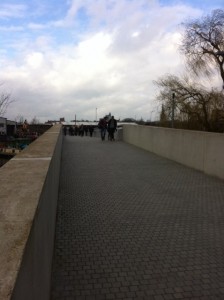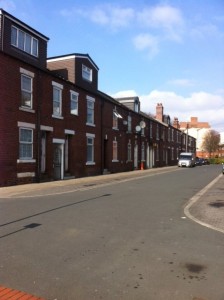On Friday 20 March, first years on the module Twentieth Century Britain visited Wakefield and The Hepworth Gallery, a key feature of the city’s regeneration. They were exploring issues of urban change in the second half of the twentieth century, thinking about economic restructuring, social identities and their real-life urban settings. The students were also acting as researchers for an on-going collaborative project between historians at the University and the gallery, led by Elizabeth Pente and Paul Ward.

The students walked through the city noting and taking photographs of examples of urban regeneration since the late twentieth century, including the Ridings Shopping Centre, Trinity Walk shopping centre and the new developments around Westgate railway station. But looking at such recent developments was designed to act as a lens through which to see the historical development of the city in the nineteenth and twentieth centuries, including the importance of coal mining and trade in wool and grain made possible by its transport links.

At The Hepworth Wakefield, the students looked at the Gott Collection (which is available online), assembled in the nineteenth century by John Gott, Vicar of Leeds and later Bishop of Truro, and his father William, a wool merchant. The collection, bound in ten volumes, includes 1,200 images consisting of watercolours, drawings and prints in the form of maps, sketches, plans and detailed architectural drawings. They considered the importance of art as a source for understanding historical change and thought about how the gallery combined its historic and artistic collections with its distinctive architecture to seek to regenerate Wakefield for the twenty-first century.



For more photographs from the visit see @profpaulward and @SarahLBastow on Twitter.
The Hepworth Wakefield was named after Barbara Hepworth, a pioneer of abstract sculpture, born in Wakefield in 1903. For more information see https://www.artsy.net/artist/barbara-hepworth
